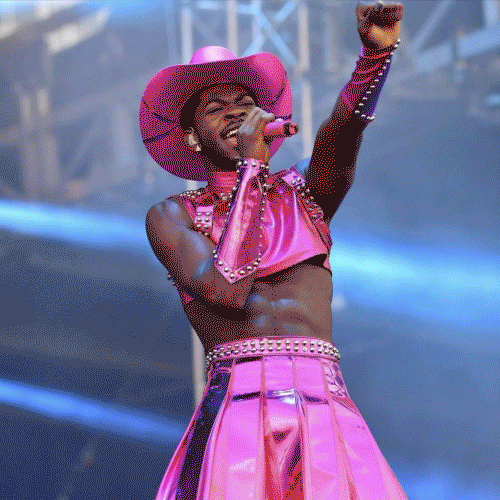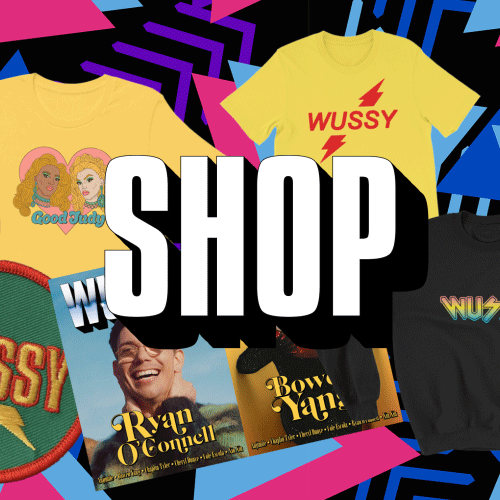The Queer Sound of Tim Burton and Danny Elfman
While all you other queers were out at the Big Haunted House on Ponce or dancing your little ripe peach cheeks off at SHALLOWEEN, I was seated with a gin and tonic in my hand at the Atlanta Symphony Hall with BeetleJuice to my right and Dracula to my left. Yea, I know you “don’t like classical music,” but this was indeed no classical concert. The Atlanta Symphony Orchestra partnered with the Georgia Boy Choir and all the fabulous LGBT people at OurSong to bring to life Danny Elfman’s music from the films of Tim Burton. I assure you it was a musical extravaganza that plucked at my tiny queer heartstrings.
The concert was everything that I had expected and more. From the BeetleJuice theme song to the comical tunes of Pee Wee’s Big Adventure, this concert touched all of the essential Elfman-Burton collaborations. During the Sleepy Hollow set, the wave of violin bows in unison made me recall the weeds blowing in the dark forest of Sleepy Hollow. The loud trombones during “Making Christmas” made me reminisce about my teenage days watching The Nightmare Before Christmas over and over and over again. When the Edward Scissorhands segment came around, the magical “Ice Dance” moment was played out. You know what song I’m talking about, the one where Kim Boggs (young Winona) walks out to her backyard to see Edward sculpting an ice angel, then realizes she’s fallen in love with a man with scissors for hands. Overall, the two biggest highlights of the concert were without a doubt when young Alok John from the Georgia Boy Choir hit the high notes during his solo performances of two songs from the music of Sleepy Hollow and Alice in Wonderland. Special props to John for sounding like a little cherub singing for his life.
Positioned above the symphony orchestra was a large screen that was showing Burton’s original sketches and clips from his films. This was a great addition to the concert, especially since the music is so pivotal to specific scenes and characters during the films. However, critically speaking, the positioning of the screen should have been higher or divided into two smaller screens at the sides of the stage. While I know the high-rollers in the orchestra seating probably saw all of our friends from OurSong, the less fortunate concert-goers in the high seats were blocked from seeing all of the performers due to the screen.
Yes, I know what you’re thinking right now, “What the f*#@ does this review have anything at all to do with us queers?” Well, let me remind you if you’ve forgotten. All queers have faced a moment in their life when they were confronted with the realization that they were and are different from most. We try to live our lives outside of the hetero-normative lifestyles that are shoved in our faces, and yes, at times we contradict the radical notion of queer life by giving into our inalienable rights as US citizens (e.g., getting married). But we all have had a time were we have come to terms with our differences. Burton’s films are chock full of issues of identity and how a larger population perceives the main character. Practically all of the main characters in Burton’s films face ridicule from others. In most of his films, those main characters are seen as despicable, disgusting, and morally degenerate. Jack Skellington is trying so hard to make Xmas something it is not, Ichabod Crane is enamored with weird devices and just too femme, and Edward Scissorhands has… well, I mean that one is a no brainer.
TIM BURTON (UNITED STATES, B. 1958), UNTITLED (EDWARD SCISSORHANDS), 1990, PEN AND INK, AND PENCIL ON PAPER, 14¼ X 9 IN., PRIVATE COLLECTION, EDWARD SCISSORHANDS © TWENTIETH CENTURY FOX, © 2011 TIM BURTON
What I’m getting at here is that at one point in our lives, we’ve realized that some people view our lives differently and do not fully understand who we are. Growing up as a young gay boy in the Bible Belt I was faced with these obstacles, as I’m sure all of you have been at one point in your own life. Tim Burton’s films gained popularity with my friends and me because, yes, they were darker than your typical PG/PG-13 films, but more so because they painted a picture of individuals who were going through some of the same things we were going through. Of course, we were all wearing JNCOs, in all black, with multiple piercings, several bracelets and necklaces, fluorescent hair dye, and causing trouble in whatever public place we could afford to be at, but we were still kids lost in the expectations of societal norms just as were Burton’s fictional characters.
Nick Seth Hemenway is an NC born queer living in the dirty dirty. Nick is primarily interested in queer art, feminist art, and contemporary art. Researching art censorship during his college years, Nick is also focused on bringing attention to certain inequalities within the art world.
Archive
- September 2025
- August 2025
- May 2025
- February 2025
- November 2024
- October 2024
- September 2024
- August 2024
- July 2024
- June 2024
- May 2024
- April 2024
- October 2023
- July 2023
- June 2023
- May 2023
- April 2023
- March 2023
- February 2023
- June 2022
- April 2022
- March 2022
- January 2022
- December 2021
- October 2021
- September 2021
- August 2021
- July 2021
- June 2021
- May 2021
- April 2021
- March 2021
- February 2021
- January 2021
- December 2020
- October 2020
- September 2020
- August 2020
- July 2020
- June 2020
- May 2020
- April 2020
- March 2020
- February 2020
- January 2020
- December 2019
- November 2019
- October 2019
- September 2019
- August 2019
- July 2019
- June 2019
- May 2019
- April 2019
- March 2019
- February 2019
- January 2019
- December 2018
- November 2018
- October 2018
- September 2018
- August 2018
- July 2018
- June 2018
- May 2018
- April 2018
- March 2018
- February 2018
- January 2018
- December 2017
- November 2017
- October 2017
- September 2017
- August 2017
- July 2017
- June 2017
- May 2017
- April 2017
- March 2017
- February 2017
- January 2017
- December 2015
- November 2015
- October 2015
- September 2015
- August 2015
- July 2015
- June 2015
- May 2015
- April 2015










